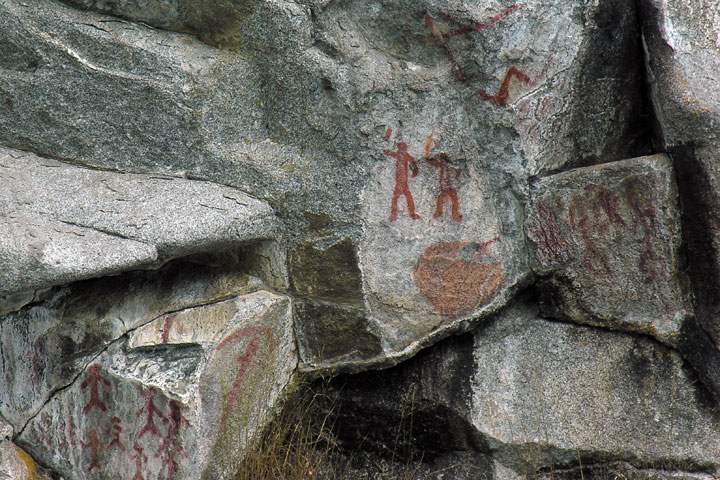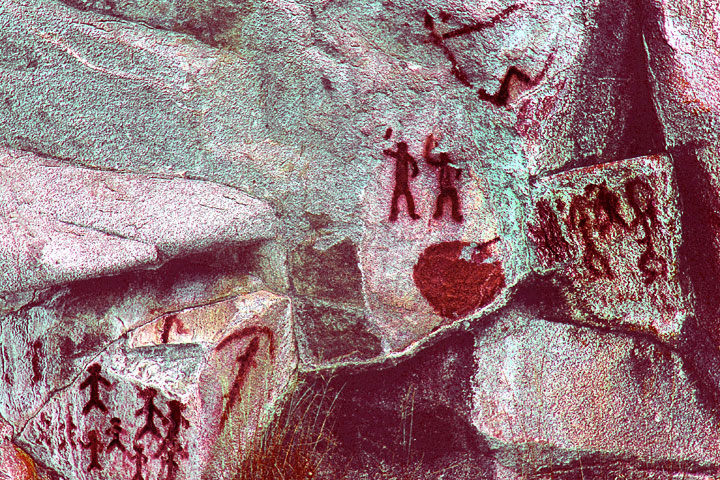Pictographs are at once art and narrative.
Pictographs—rock paintings—were created by Aboriginal people over millennia. Alas, many have become obscured by time, suffering fading, erosion, lichen, and sometimes vandalism. There is now often difficulty in discerning many of the shapes depicted.
There are over two-dozen ancient pictographic sites around Kootenay Lake. Most have been known only to locals and archaeologists. However, the use of clever image-enhancement software on site photographs has resulted in publicity from Parks Canada and the Globe and Mail. These articles tell how pictographs, two of which are adjacent to the Main Lake, have started to yield their secrets.
The pictographic seachange started with an image-enhancement technique developed by NASA for use on planetary missions. It was then adapted for pictographs by Jon Harman, an American mathematician and amateur archaeologist. Harman’s software was adopted by Brad Himour, an archaeologist at Parks Canada. Mr. Himour has been working cooperatively with Aboriginal Elders to protect, preserve and interpret rock-art sites in the Kootenay region. This cooperation resulted in a the article in the Globe and Mail.
I thought: if Parks can do this with its pictures of pictographs, why can’t I do it with mine? I acquired the software and tried it on a picture of a local pictograph. It works.
The picture, below, shows my original photograph. When the cursor rolls over it, the picture changes to show the enhanced image (you might have to wait a moment for it to be loaded the first time). Many virtually unnoticeable features in the original picture become striking in the second. Consider the smudge in the lower left that turns into a swimming lizard (or canoe) with a bow wave.
While I have my own guess as to the story being told at this site, for now I merely note that such enhanced images allow the welcome possibility of rediscovering both the art and narrative enshrined on cliffs around the Lake.
Before and after enhancement: move cursor over image; wait; move cursor off image; repeat. As I cannot get the image swap to work on an ipad, I have attached a copy of the enhanced image below this one.



Thanks, that’s really interesting. And I don’t know how it works but I do get the enhanced image when I put my cursor on the first picture.
Grace
congratulations to our favorite lakeside geek! does the software work on any photograph? i have some 35mm slides somewhere of the blue arrows from around the corner. i could dig them out? peter b.
Peter, no need to dust off your ancient slides; I have photographed that pictograph a couple of times including taking some high-resolution digitals last summer. And yes, the software does a good job on it. I particularly like the way it brings out the semicircle of six people watching two others having sex—or at least that is my interpretation of what is represented.
The Pictograph pictures are amazing. Thankyou so much for sharing them withe us. Kay S.
Thanks so very much for sharing these images Alistair! I, too, have several images that my father took in the 1940’s along Kootenay Lake. This has given me inspiration to share these images as you have done! I plan to come to the next History Interest Group meeting where I will share these small slides with you for your point of view….they should really be shared before they fade away….